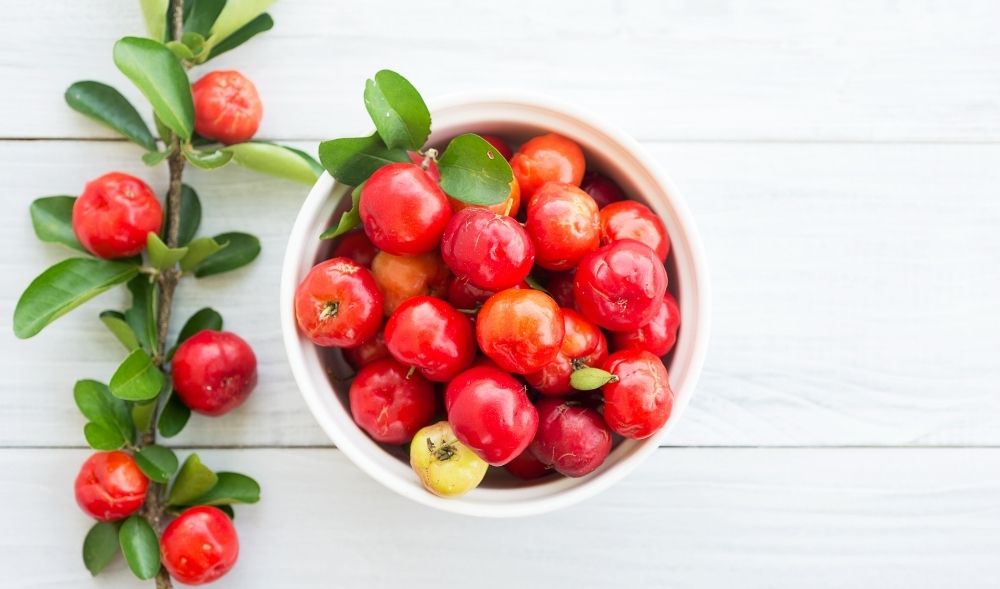
Superfood: Acerola
Read on for more on the benefits of this superfood!
Where is the acerola plant grown?
The plant originated in Mexico, but today it's also found in tropical and subtropical regions of North and South America, as well as in Asia. The ripe fruit is red, yellow or purple, and shaped like a sphere or a cylinder. Because it matures so quickly (within approximately 25 days), it can be harvested up to eight times per year.
What beneficial ingredients does the plant contain?
Many nutrients found beneath the fruit’s thin skin have positive effects on health and beauty. Another advantage is that the slightly tart pulp has few calories but is packed with vitamin C: 100 grams of fresh juice contain between 700 and 4,800 mg, depending on the plant variety and growth habitat. By comparison, the reference intake of vitamin C is 100 mg in men and 95 mg in women.
Acerola is also a rich source of potassium, magnesium, folic acid, calcium and vitamin B. The fruit itself contains flavonoids, carotenoids, pectins and numerous phytochemicals, such as anthocyanins. Many of the beneficial ingredients are found in the skin and are often lost when the juice is extracted.
What are the benefits of acerola?
Acerola's primary benefits come from its high vitamin C content. The fruit can be used to supply high levels of vitamin C whenever greater doses are required -- for example, to improve athletic performance, fight infections or provide health benefits to smokers. The vitamin can be metabolised better in combination with the plant's many other healthy ingredients. In addition, it is much more bioavailable than many synthetic vitamins. Antioxidants like anthocyanins, which are contained in the fruit, combat free radicals. This reduces inflammation and acts as a natural cancer treatment.
What are the beauty benefits of acerola?
The acerola fruit, also known as the Barbados cherry, stimulates metabolism and rejuvenates cells. Beauty brands harness these properties by including the fruit as an ingredient in various creams, lotions and facial cleansing products. The plant’s phytochemicals and high vitamin C content are believed to alleviate the symptoms of obesity. In addition, regular intake can have an anti-ageing effect.
